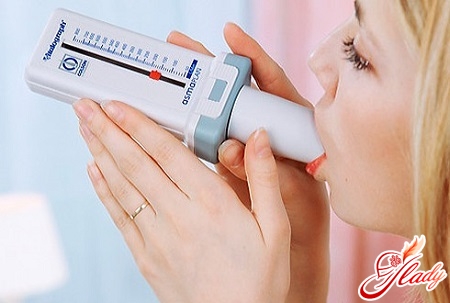
Of all the infectious hepatitis knownto mankind, hepatitis C is the youngest - it was discovered only in the 80s of the last century. However, since then it has spread so actively around the world that now about 200 million people are sick or are carriers of this virus. Every day, several tens of thousands of patients are added to their army. Any of us can be next, so everyone should know what hepatitis C is and how this disease is transmitted. It should be noted that hepatitis C is also the most insidious of all hepatitis. It is called the "gentle killer", since the virus that causes the disease can exist in the human body for many years, almost without revealing itself, but at the same time gradually destroying the body. Someone who carries the hepatitis C virus or is already sick with sluggish, chronic hepatitis is indistinguishable from a healthy person. This is what makes the disease so dangerous.
What is hepatitis C and what is its risk?
It is a disease that destroys cells.liver. There is a carrier stage, when a person simply serves as a walking farm for viruses. In this case, the disease does not reveal itself in any way. However, with the onset of a sluggish form of the disease, which is also called chronic, the disease gradually destroys the liver. Very soon, the patient begins to feel constant weakness, fatigue, drowsiness. After some time, these symptoms are joined by aching joints after physical exertion. With an advanced disease, the patient begins to have problems with digestion, a sharp decrease in appetite, dizziness and nausea. The most dangerous symptom is pain in the right hypochondrium. Often they are masked, and instead of pain in the liver area, a person may have a ache in the right shoulder or arm. If you have such symptoms, you should immediately contact an infectious diseases clinic and get tested for the presence of markers in the blood not only for hepatitis C, but also for B, since these two types of viruses very often accompany each other. Hepatitis has a long incubation period, from 3 to 6 months, so in case of dangerous contact it is better to wait six months and only then go and get tested. Sometimes hepatitis C is not detected immediately. If the result is negative, it is better to play it safe and have your blood tested again after waiting a month or two. Remember, hepatitis is not something to joke about. Advanced disease often leads to cirrhosis - massive death of liver cells, whose place is taken by connective tissue cells. They are unable to cleanse the blood of harmful substances, so patients with cirrhosis are doomed to a slow death. Of course, it is better to prevent any disease than to treat it. That is why it is so important to know how this disease is transmitted.
Hepatitis C - how and where you can catch it
The hepatitis C virus is extremely persistent.It can live at room temperature for up to 3-4 days, and can withstand even strong heating, up to 80-90°C, quite well. However, the hepatitis C virus is transmitted only from blood to blood. And this fact narrows the ways of its transmission. There are several:
- Sexual contact.
- Direct transfer of the virus with blood transfusions and injections.
- Infection with tattoo or manicure.
- Household transmission route, through the use of common hygiene items - toothbrushes and scissors.
- From mother to child, at the time of delivery.
It should be noted that there are a number of cases whenThe transmission route of hepatitis C has not yet been identified. Therefore, certain precautions should always be taken when in contact with and living with strangers. They are elementary - do not use other people's hygiene items, avoid damaging the skin, and if this happens, immediately treat and cover the wound with a bandage or dressing. Each of the transmission routes has many features, so each of them is worth discussing separately.
Infection with hepatitis C during sexual intercourse
Hepatitis C is not transmitted through sexual contact.not so often. Moreover, there are many married couples where one of the spouses is sick or is a carrier of hepatitis C. These people have an active sex life without using condoms. However, cases of transmission of the disease are quite rare. But it should be noted that we are talking about traditional couples consisting of a man and a woman. In homosexual couples, where both partners are male, the statistics are somewhat different. They have a much higher percentage of hepatitis C infection. This is due to the fact that during anal sex there is a higher risk of damage to both the mucous membrane and the adjacent skin. This feature is characteristic of all diseases that are sexually transmitted. With normal, traditional sex, the risk of damage to the mucous membrane is minimized. However, with more exotic types of sexual contact, it increases sharply. It should be noted that there are still no accurate statistics on oral sex. Therefore, it is impossible to say with certainty how often infected people transmit hepatitis C by practicing this type of sexual contact. However, you should know that the presence of cracks or sores in the mouth of one of the partners should immediately become a reason to refuse this type of caresses.
Transmission of the virus with blood transfusions and injections
Today, blood and blood products are being tested.carefully enough, so the risk of contracting hepatitis C in a hospital is extremely low. The use of disposable syringes and needles has reduced the risk of transmitting the virus through injections to zero. However, it should be noted that there are two groups of people who are at risk of contracting hepatitis C every day - and precisely as a result of injections. These are doctors and drug addicts. The former risk being pricked with a needle or instrument that has just come into contact with the patient's blood, while the latter often use used syringes left over from fellow sufferers.
Infection due to tattoo and manicure
Tattoo and manicure tools are very oftencome into contact with blood. Despite the fact that the rules require that only disposable needles be used for tattooing, each time throwing away the needle after use, artists try to save money and “stretch” one needle for several clients. Unlike hospitals, sanitary control over tattoo parlors is not so strict. Therefore, there have been cases when people in tattoo parlors were infected not only with hepatitis C or B, but also with HIV. To protect themselves from such a danger, the client should demand that the artist open the package with the needle right in front of them, in front of their eyes. In nail salons, the situation is aggravated, because disposable scissors and tweezers have not yet been invented. All instruments must be sanitized after each client. However, in practice, artists do not always keep the instruments in a disinfectant solution for the required time. The reasons for this are different - both a large influx of clients and elementary inattention. The best way to avoid the risk of contracting hepatitis C at a nail salon is to choose a nail technician you trust and to go to the salon at a designated time when there is no rush. Another way is to get your own manicure kit and carry it with you every time you visit the salon.
Household way of transmission through hygiene items
Cases where people transmit the hepatitis C virusthrough toothbrushes, scissors and other household items, are extremely rare. However, even the smallest cracks in the oral mucosa or skin can lead to microscopic droplets of blood getting on household items. Therefore, if there is a patient with hepatitis C in the house, a certain amount of caution should be observed in everyday life. The carrier of the disease should have everything separately - a toothbrush, toothpaste, nail scissors, towels and dishes. In addition, it is advisable to have gloves and medical tweezers in the house. They are needed to treat cuts without coming into contact with blood.
Transmission of the disease from mother to child, at the time of delivery
The risk of intrauterine infection of the fetus is not sois great. The placenta surrounding the baby reliably protects it from the penetration of viruses that can live in the mother's body. However, at the time of birth, when the baby leaves the placenta, there is still some risk of infection. However, with proper management of labor by an obstetrician-gynecologist, this risk is sharply reduced. The number of infants infected with hepatitis C from their mothers is 4-5 children per hundred births. Finally, I would like to note that hepatitis C as a disease is quite dangerous. So far, there is no therapy that can quickly and reliably cure this disease. However, there are many drugs that protect liver cells and help the body cope with the disease on its own. Among people who have undergone treatment with hepatoprotectors, the number of recovered people reaches 30-35%. This creates quite encouraging prospects for those who are already sick. For healthy people, the main task is not to get sick. To do this, you need a little - avoid dangerous contacts, treat wounds and monitor personal hygiene.









